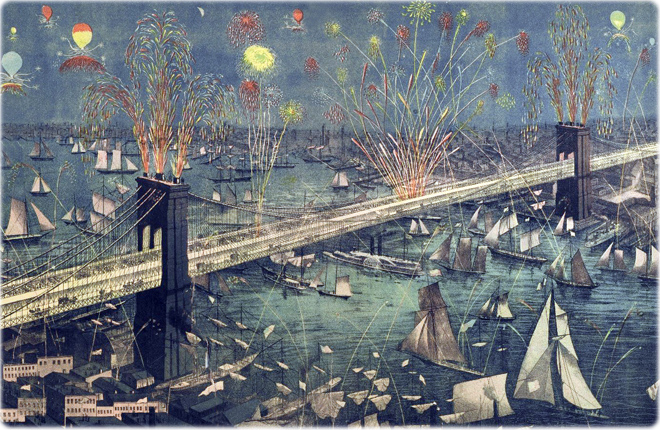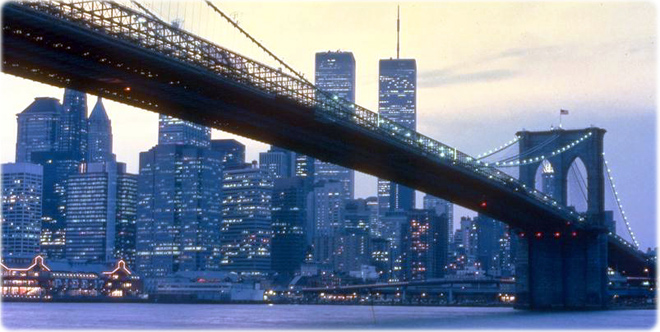Brooklyn Bridge
The construction of Brooklyn Bridge, over the East River, started on January 3, 1870 and opened to traffic on May 24, 1883 (Queen Victoria's birthday). Designed by German-born engineer John Augustus Roebling (1806-1869), it was then considered the world's greatest achievement in bridge construction. It is a suspension bridge spanning the East River from Brooklyn to Manhattan. Total length 6,016 feet, width 85 feet.
At the time of its opening, Brooklyn Bridge was the longest spanning bridge in the world. Construction of the bridge began after Roebling's death. His system of suspension bridge construction became the standard for suspension bridges throughout the world. The cables were also innovative because it was the first time that steel wire, galvanized to protect against corrosion, was used in a bridge, and the second time that rolled-steel structural sections were used in a bridge superstructure.
A comprehensive reconstruction took place between 1944 and 1954. The railroad and trolley tracks were removed, the roadways were widened from two lanes to three lanes, and new approach ramps were constructed. Brooklyn Bridge was designated a National Historic Landmark in 1964 and a National Historic Civil Engineering Landmark in 1972. In September 2021, a two-way protected bike lane opened along the bridge.
Brooklyn Bridge from Brooklyn, after 2014, when the One World Trade Center, in the background, was completed. Credit: Julienne Schaer/NYC Tourism + Conventions.

Above, opening night for the Brooklyn Bridge, on May 24, 1883, with great display of fireworks. Lithograph on paper published by A. Majors, 1883 (source: Brooklyn Museum). The Bridge was lighted at night with 35 electric lights of 2,000 candle power each.

Brooklyn Bridge in the 1990s.
Brooklyn Bridge


|
Copyright © Geographic Guide - Antique photographs of NYC. |